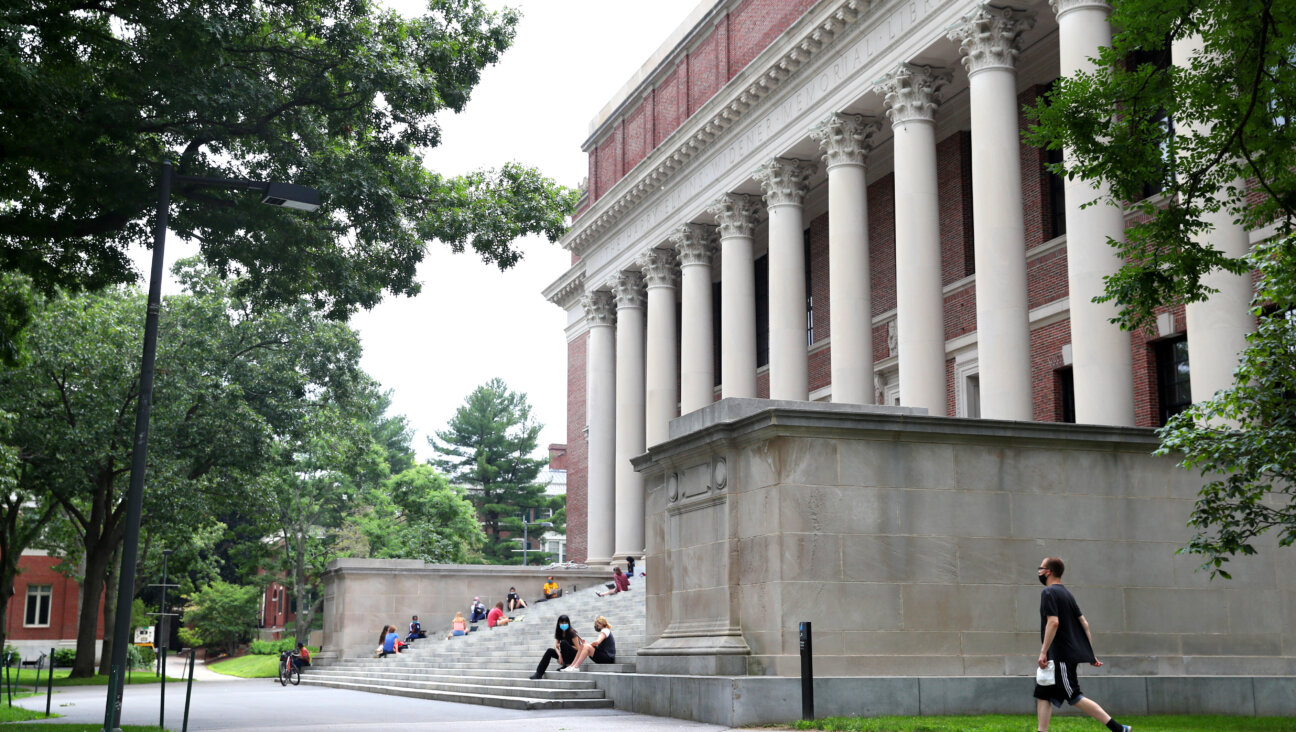Storied L.A. Shul Thinks Big, Seeks $100 Million
Los Angeles — Wilshire Boulevard Temple is no penny-ante shul. L.A.’s oldest Reform congregation, the synagogue has long served as a spiritual home to Tinseltown’s titans and loomed large on Southern California’s Jewish landscape. Today, it boasts 2,500 member families, and three separate campuses spread across the metropolitan area — including a 200-acre summer camp and conference center in Malibu.
It’s no surprise, then, that this larger-than-life synagogue is led by a rabbi with correspondingly grand ambitions.
“Part of my job is being CEO of a medium-sized company,” said Rabbi Steven Leder. “I don’t really care that our marketing materials, for example, are as good or better than most synagogues. I want to know why they aren’t as good as Apple, or Coke or Pepsi.”
Now, Leder — who meets with an executive coach nearly every month and calls the business-management book “Good to Great” his “bible” — is leading his congregation in the most ambitious fundraising drive of its 146-year history. The Wilshire Boulevard Temple is seeking to raise $100 million over the next few years to refurbish its historic sanctuary and build a sprawling campus that will serve as the hub for Jewish life on the city’s east side.
“This is the largest single synagogue capital campaign I have ever heard of by a magnitude of perhaps as much as two,” said David Mersky, a consultant to not-for-profit organizations who works regularly with synagogues on fundraising endeavors. “If the Wilshire Boulevard Temple campaign succeeds, what it will have done is said we have a role to play in the building of community and are worthy of philanthropic investments at a very significant level.”
The fundraising campaign also is the latest example of what some see as the troubling trend of turning religious institutions into corporate entities — with size replacing intimacy, and financial resources worshipped above all else.
But of course, this is L.A., where everything exists on a larger-than-life scale (think behemoth Hollywood studios and the sprawling geography that facilitated their rise). Another Reform congregation, Stephen S. Wise Temple, claims 3,000 family units, and its hilltop campus includes a swimming pool and two social halls. Valley Beth Shalom, a Conservative synagogue in the San Fernando Valley, also serves as a center of Jewish life, with an array of classes and adult education programs offered daily.
Under Leder’s watch, Wilshire Boulevard Temple is seeking to become a Jewish community center of sorts on L.A.’s east side, which was abandoned by Jews in the latter half of the 20th century. Now, the synagogue, with a historic sanctuary that has national landmark status, is staking its claim to the area, as young Jews have started to return to the urban center. Plans for the new campus include a day school, a nursery school — in addition to the schools the synagogue already operates on its Audrey and Sydney Irmas campus, on L.A.’s west side — a social services pavilion and even a mikveh, or Jewish ritual bath.
Leder, 48, has a board — and a congregation — with deep pockets and ties to the entertainment business. A day at the office for the Minneapolis native might involve a phone call seeking fundraising advice from Creative Artists Agency president Richard Lovett, or a meeting with Chris Silberman, who runs ICM, another of Tinseltown’s top talent agencies. Come the High Holy Days, Leder will be delivering one of his rousing sermons to a room that might include synagogue member Les Moonves, president and CEO of CBS Corporation.
Indeed, Leder is not the first Wilshire Boulevard rabbi to rub elbows with the rich and famous. Having served the congregation for 69 years, beginning in 1914, Rabbi Edgar Magnin was known as the “rabbi to the stars.” Magnin had close ties to the burgeoning motion picture industry, even presiding at the marriage of actress Norma Shearer and producer Irving Thalberg and at the funeral of Louis B. Mayer. In later years, Magnin participated in the presidential inaugurations of both Richard Nixon and Ronald Reagan.
While the modern-day titans are attracted to Wilshire Boulevard because of its top-tier status and its history as the Hollywood moguls’ congregation — and the rabbi, no less, speaks their bottom-line language — some critics contend that there’s a downside to bringing the boardroom into the house of worship. History professor David Myers, director of the UCLA Center for Jewish Studies, warned against taking a private-sector approach to running spiritual institutions.
“There’s a kind of privatization and corporatization of these institutions that used to have a different ethos about them,” he said. “That’s something I have very mixed feelings about. It can allow for the maximization of resources, but on the other hand, it can be somewhat soulless.”
Still, Myers said the synagogue’s effort to return to L.A.’s east side was “noble.”
One-third of the funds that the synagogue hopes to raise for its east side campus are earmarked for restoring the sanctuary, a Byzantine dome constructed in 1929. The sanctuary’s golden ceiling — though dulled by age — is still breathtaking, as is the mural depicting the history of the Jews that encircles the room. Mayer donated the arched stained-glass windows, and the Warner brothers donated the mural.
This time around, Wilshire Boulevard Temple is first tapping L.A.’s finance and real estate communities to fund its expansion. Hollywood executives presumably will follow, as the campaign, now in its “quiet” phase, ramps up and Leder reaches out to his congregants in the entertainment business.
Thus far, Ilene and Stanley Gold — the latter is president of The Walt Disney Company’s investment arm, Shamrock Holdings, and recently was appointed chairman of the Jewish Federation of Greater Los Angeles — are lead donors. Philip de Toledo, president of mutual fund giant The Capital Group Companies, is co-chairing the campaign along with his wife, Alyce.
As Mersky and others noted, synagogues have not traditionally fared well in fundraising as compared with other Jewish communal institutions. Moreover, even other Jewish communal institutions have failed to draw the kind of substantial philanthropic dollars that such non-Jewish institutions as museums, hospitals and symphony orchestras have attracted. Still, only a year into the process, Wilshire Boulevard Temple is already halfway toward meeting its goal.
Leder, who has spearheaded the campaign, declined to disclose his own salary.
When synagogues grow and become miniature Jewish cultural centers, as they have in L.A., the question of whether they can become too big remains.
David Kaufman, who is professor of Jewish studies at the Los Angeles campus of Hebrew Union College-Jewish Institute of Religion and an expert in the history of synagogues, said there are positives and negatives to the phenomenon. The benefit, Kaufman said, is that a large synagogue can afford to sponsor a wide range of classes and programs that enhance Jewish identity outside of religious practice. The downside, he said, is that the individual can get lost in such a massive organization.
According to congregants, Wilshire Boulevard Temple has avoided this fate in part by having a staff of six rabbis. Even Leder, busy as he is with management and fundraising responsibilities, still performs lifecycle events and provides spiritual counsel. And despite one expansion nearly a decade ago — when it created the Irmas campus and gained some 700 families — and the new expansion, which presumably will net even more family units, synagogue members say they still feel a sense of belonging.
“It may be in pockets, there may be a community of those people who have children in the day school, or a community of those who have been involved in the temple for a long time, or there may be groups involved in adult learning,” said Bradley Tabach-Bank, a real estate lawyer and Wilshire Boulevard congregant who once served on the synagogue’s board. “But there’s a definite sense of community.”
The Forward is free to read, but it isn’t free to produce

I hope you appreciated this article. Before you go, I’d like to ask you to please support the Forward.
Now more than ever, American Jews need independent news they can trust, with reporting driven by truth, not ideology. We serve you, not any ideological agenda.
At a time when other newsrooms are closing or cutting back, the Forward has removed its paywall and invested additional resources to report on the ground from Israel and around the U.S. on the impact of the war, rising antisemitism and polarized discourse.
This is a great time to support independent Jewish journalism you rely on. Make a Passover gift today!
— Rachel Fishman Feddersen, Publisher and CEO
Most Popular
- 1

News Student protesters being deported are not ‘martyrs and heroes,’ says former antisemitism envoy
- 2

News Who is Alan Garber, the Jewish Harvard president who stood up to Trump over antisemitism?
- 3

Fast Forward Suspected arsonist intended to beat Gov. Josh Shapiro with a sledgehammer, investigators say
- 4
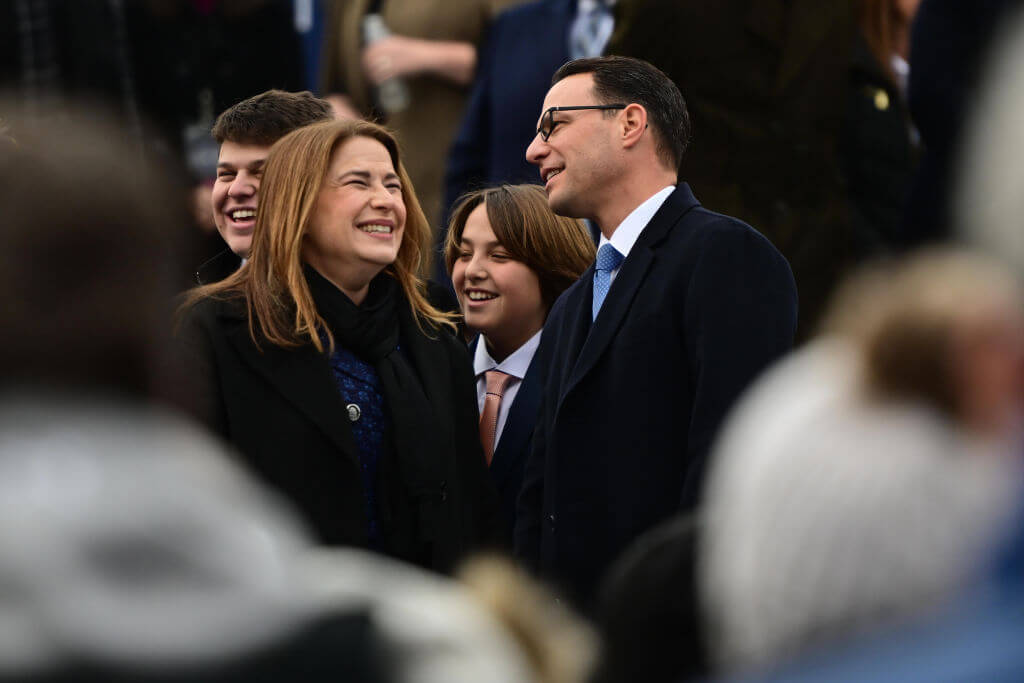
Politics Meet America’s potential first Jewish second family: Josh Shapiro, Lori, and their 4 kids
In Case You Missed It
-
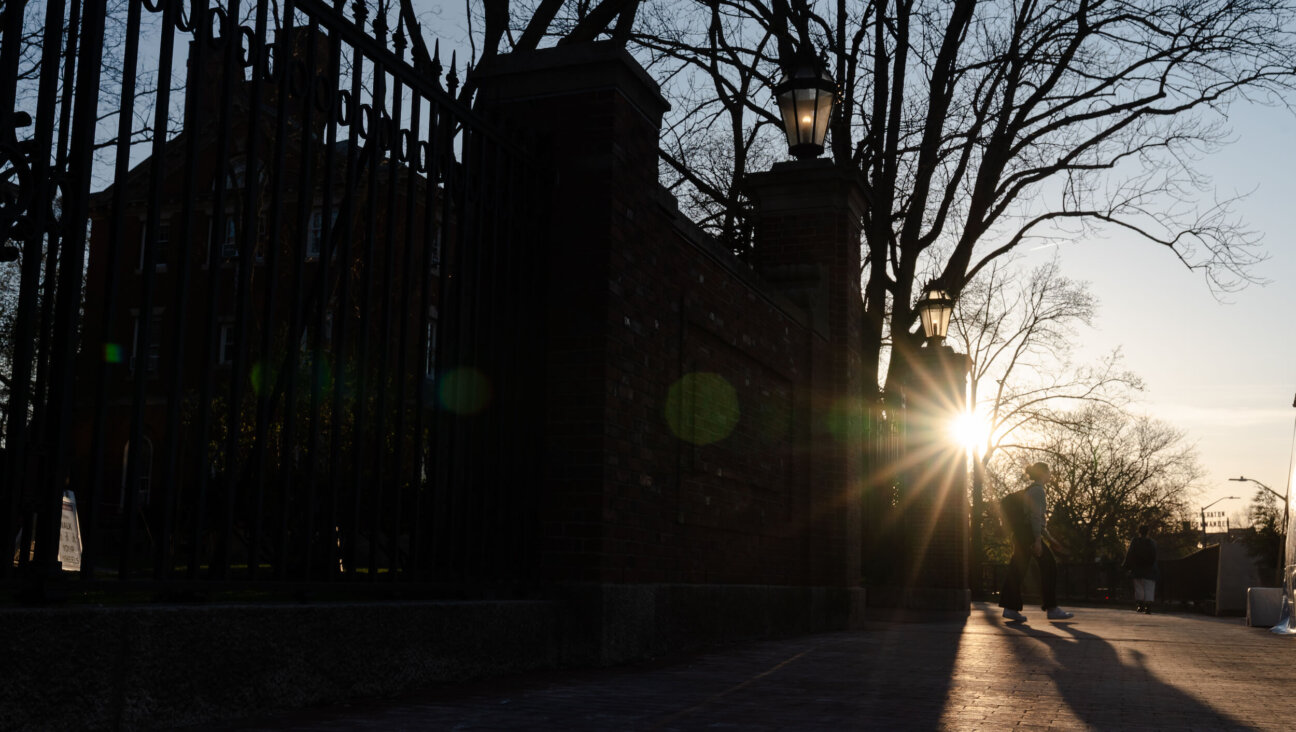
Opinion Why can Harvard stand up to Trump? Because it didn’t give in to pro-Palestinian student protests
-
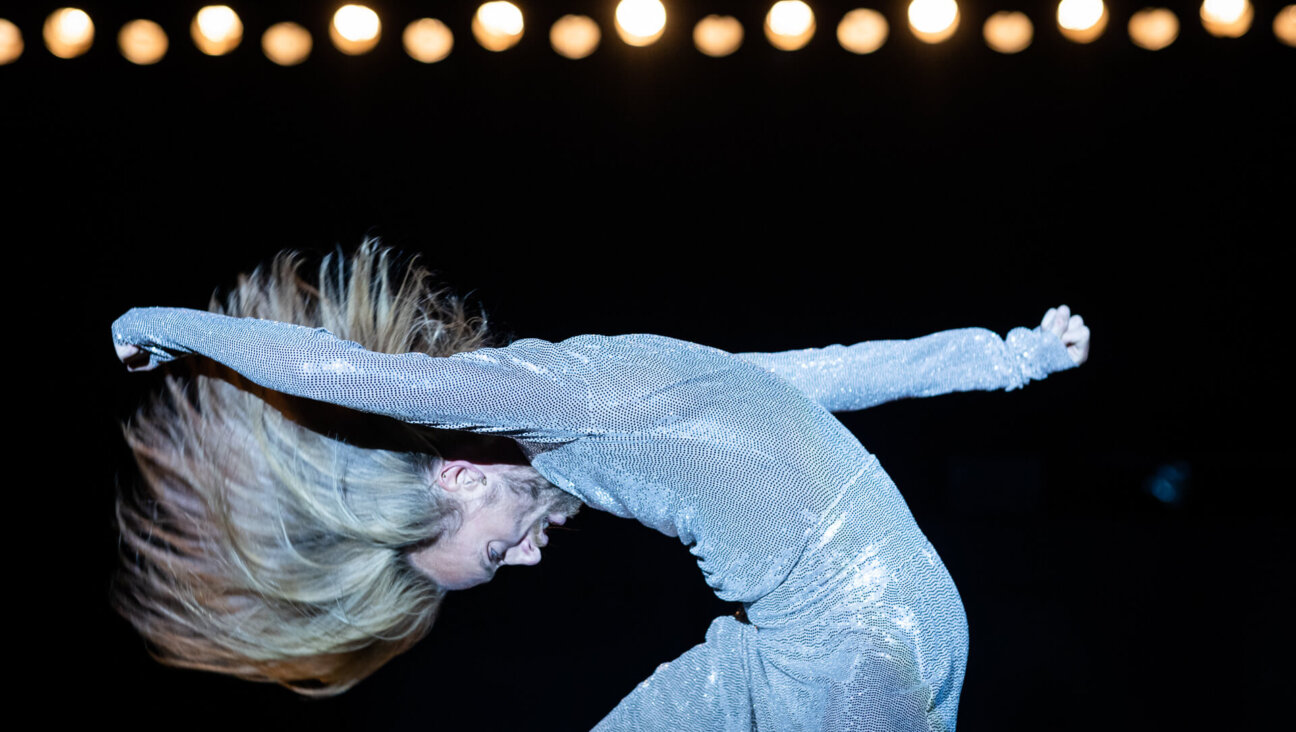
Culture How an Israeli dance company shaped a Catholic school boy’s life
-
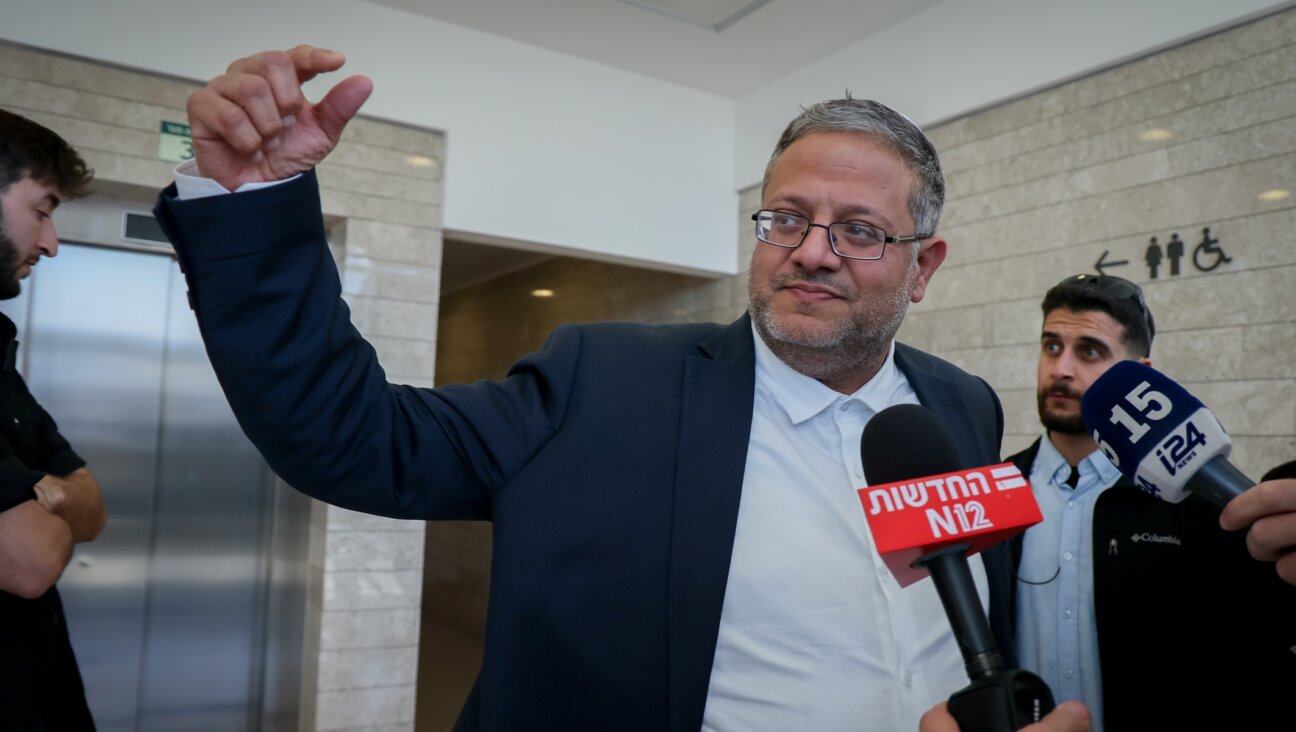
Fast Forward Brooklyn event with Itamar Ben-Gvir cancelled days before Israeli far-right minister’s US trip
-
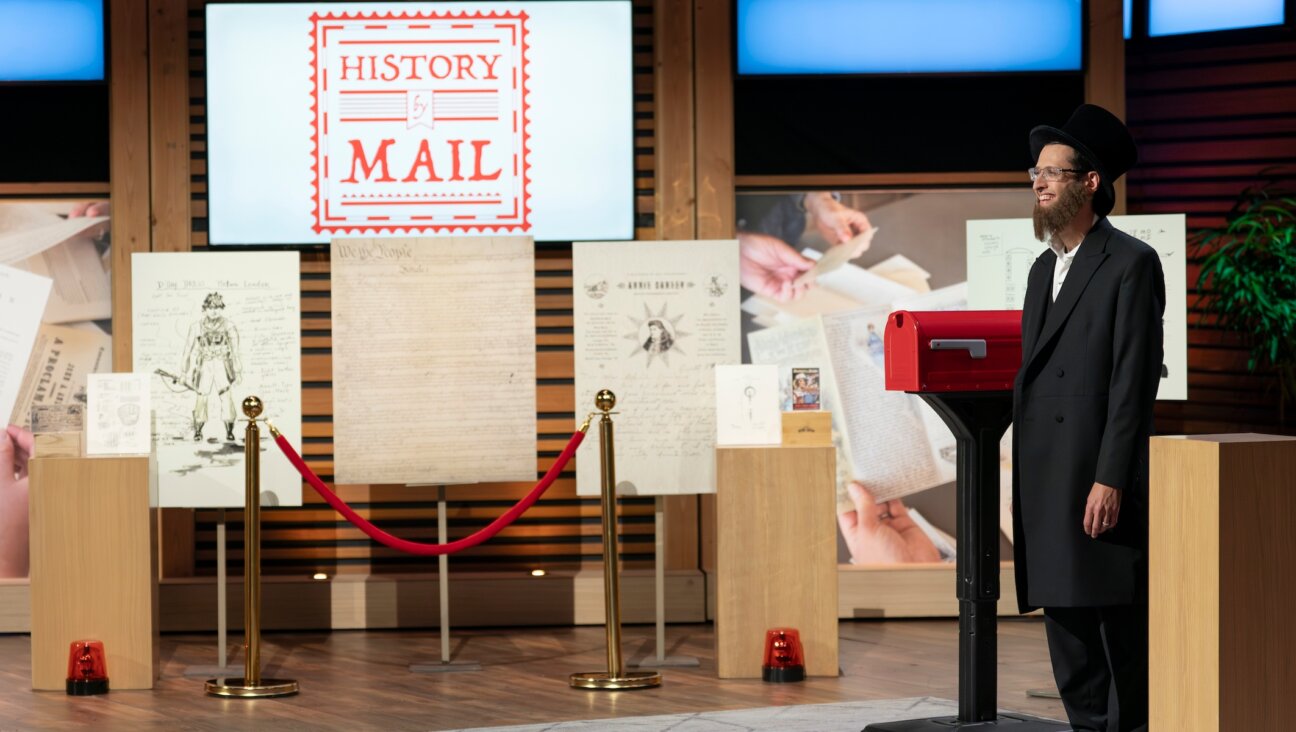
Culture How Abraham Lincoln in a kippah wound up making a $250,000 deal on ‘Shark Tank’
-
Shop the Forward Store
100% of profits support our journalism
Republish This Story
Please read before republishing
We’re happy to make this story available to republish for free, unless it originated with JTA, Haaretz or another publication (as indicated on the article) and as long as you follow our guidelines.
You must comply with the following:
- Credit the Forward
- Retain our pixel
- Preserve our canonical link in Google search
- Add a noindex tag in Google search
See our full guidelines for more information, and this guide for detail about canonical URLs.
To republish, copy the HTML by clicking on the yellow button to the right; it includes our tracking pixel, all paragraph styles and hyperlinks, the author byline and credit to the Forward. It does not include images; to avoid copyright violations, you must add them manually, following our guidelines. Please email us at [email protected], subject line “republish,” with any questions or to let us know what stories you’re picking up.






